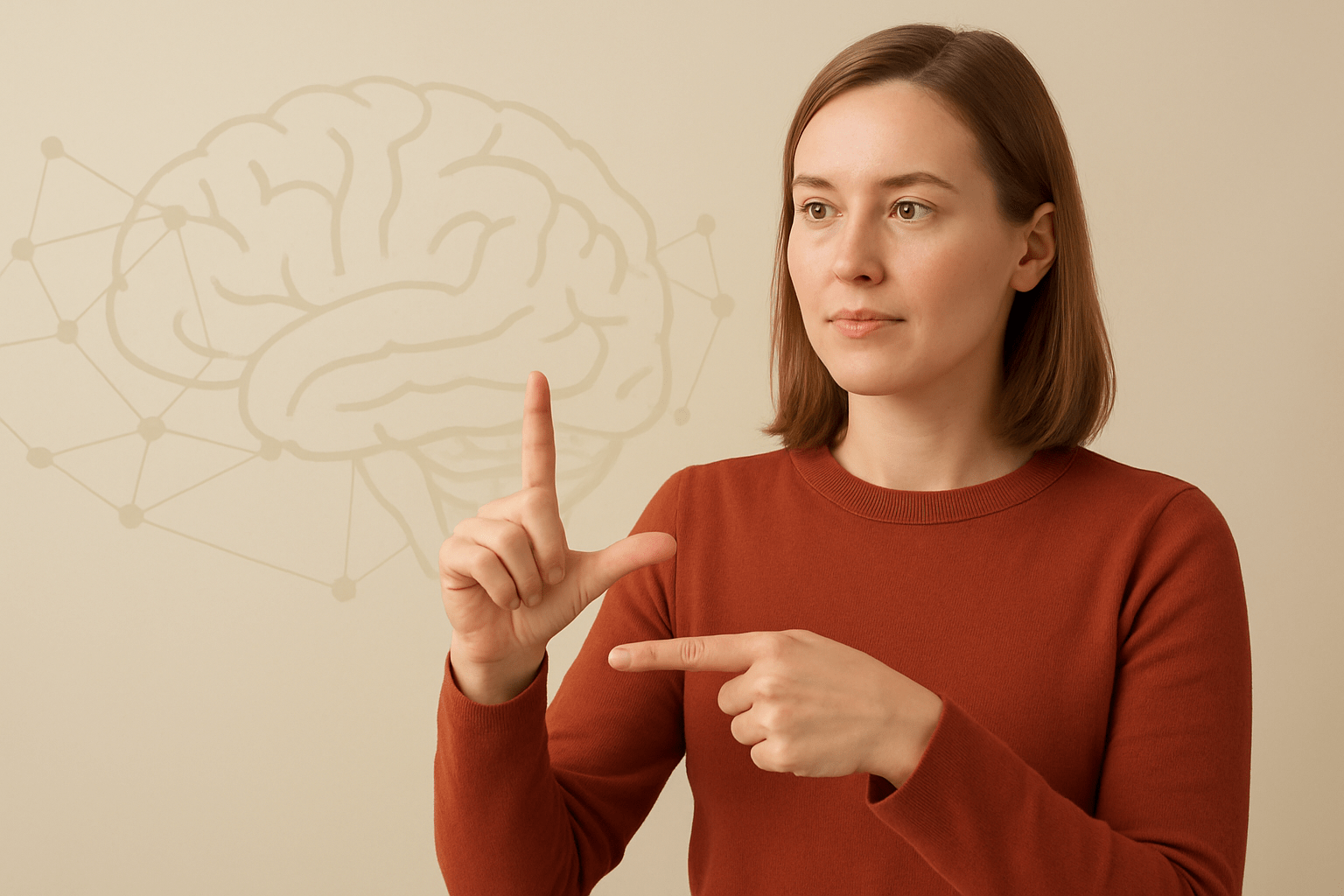Have you ever wondered what happens inside your brain when you learn sign language? It turns out — quite a lot! The neuroscience of sign language reveals that signing doesn’t just build communication skills; it actually rewires the brain in powerful ways. From improving memory to boosting multitasking and empathy, learning to sign engages both hemispheres of the brain more deeply than many spoken languages do.
Whether you’re a student, parent, or future interpreter, understanding how signing affects brain development can deepen your appreciation for this remarkable language.
Sign Language and Brain Plasticity
When you learn a new skill — whether it’s playing piano or picking up a new language — your brain changes. Scientists call this neuroplasticity, the brain’s ability to form new connections and reorganize itself.
Studies using brain imaging show that learning sign language activates both the left and right hemispheres, including areas typically reserved for spoken language (like Broca’s and Wernicke’s areas). This means signers process signs in the same language centers as spoken words — but they also engage spatial and visual processing regions that spoken languages don’t.
This dual activation makes sign language one of the most powerful tools for cognitive flexibility and brain growth.
🧠 Interesting fact: Deaf and hearing signers show similar brain activation patterns when using sign language — proving that language is about structure and meaning, not sound!
Bilingualism and Cognitive Benefits
Learning sign language is a form of bimodal bilingualism — using two languages that rely on different modalities (visual–gestural and auditory–verbal). Research shows that bilinguals, including those fluent in sign language, have stronger executive functions like attention control, memory retention, and problem-solving.
Children exposed to both sign and spoken language often display enhanced creativity and mental flexibility, switching seamlessly between the two systems. Adults who learn sign language later in life also benefit — it helps delay cognitive decline and supports healthy aging.
If you already speak one language, signing introduces a new channel of communication that makes your brain more efficient overall.
Visual-Spatial Processing and Memory
Because sign language relies on space, movement, and visual memory, it strengthens spatial reasoning and working memory. Signers learn to track hand shapes, directions, and facial expressions — an intricate blend of motion and meaning.
MRI studies have shown that proficient signers have increased gray matter density in the parietal lobes, which handle spatial awareness and visual attention.
This is why people who learn sign language often become better at reading body language, visualizing objects in 3D, and multitasking — skills that carry over into daily life.
Emotional and Empathic Intelligence
Signing isn’t just about the hands — it’s about the face, eyes, and emotion. Learning to sign naturally sharpens emotional perception and empathy.
Because sign language relies so much on nonverbal cues, signers tend to develop stronger sensitivity to body language and tone, even outside the signing context. This awareness can make communication more meaningful and relationships more attuned.
It’s no wonder many therapists, educators, and parents are now learning sign language — not only to communicate, but to connect more deeply.
How the Brain of a Signer Differs
Research has shown that deaf signers process signs in visual motion areas of the brain, while hearing non-signers use those same regions for tracking general movement. Over time, signers’ brains become finely tuned to linguistic motion — distinguishing meaning where others see only gestures.
This specialization proves that sign language is not “gesture-based communication,” but a complete linguistic system supported by unique neural networks.
Why Learning Sign Language Is Good for Everyone
Even if you’re not planning to become an interpreter, learning sign language offers incredible cognitive and emotional benefits:
- Strengthens memory and multitasking
- Improves focus and spatial reasoning
- Boosts empathy and social awareness
- Enhances bilingualism and language learning overall
And perhaps most importantly, it bridges worlds — allowing you to connect with an entire community through shared understanding.
If you’re inspired to begin your journey, you can explore our Beginner’s Guide to Learning Sign Language or learn how to Become a Certified Sign Language Interpreter to turn your passion into a career.
Conclusion
The neuroscience of sign language beautifully illustrates how the human brain adapts to communication in all its forms. Whether you’re hearing, deaf, or hard of hearing, signing reshapes your mind — expanding your ability to think, perceive, and connect.
Learning to sign doesn’t just change how you communicate; it changes who you become.


